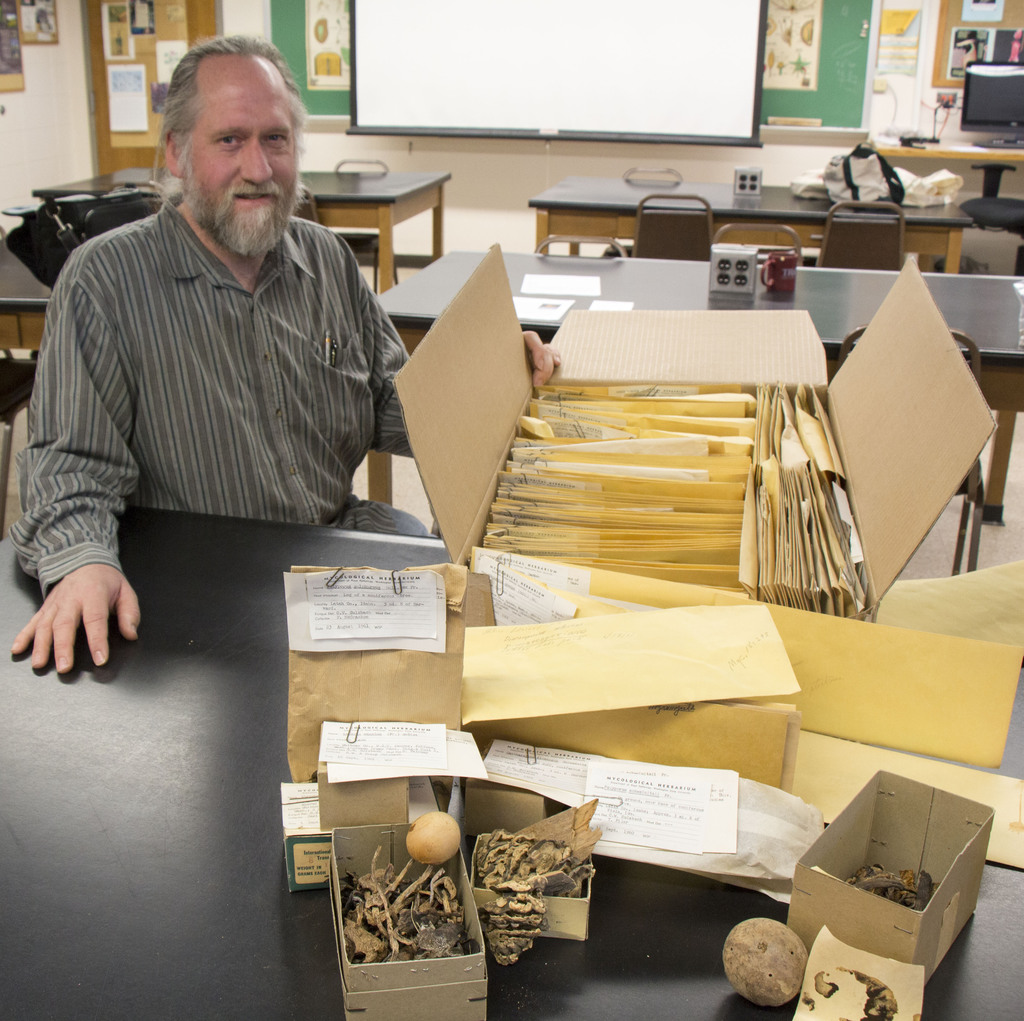High Plains Herbarium receives three collections

CHADRON – Three significant donations have expanded the scope of the High Plains Herbarium collection at Chadron State College in a new and exciting way, according to Steve Rolfsmeier, director of the herbarium.
The first, an archival-quality collection of about 350 liverworts, was donated by Patricia Thomas Wikel, the wife of Rolfsmeier’s undergraduate adviser at Doane College in the early 1980s.
Wikel collected the liverworts primarily in Nebraska, Tennessee and Missouri following her master’s work at Missouri State University. Her 1974 master’s thesis about the liverworts, “Hepaticae of the Interior Highlands of North America,” is still considered an important reference, according to Rolfsmeier.
“This collection is notable because of its size and Patricia’s detailed records that came with it. I knew she’d been collecting and I was interested in them. I appreciate her work and the donation,” Rolfsmeier said.
The second collection, an estimated 300 Pacific Northwest specimens of moss, lichens and liverworts, was gathered by the late Charles Sulzbach, an Alliance native who graduated from CSC in 1960 with a bachelor’s degree in chemistry and biology.
Sulzbach’s daughter, Tracy Dahlenburg of Denver, collected many of the specimens in 1961 with her father, according to typed labels on the boxes, envelopes and sacks in the collection.
After her father died in May 2014, Dahlenburg took the collection to Dr. Dean Glawe, director of the fungal herbarium at Washington State University in Pulman where her father had been a doctoral student when he gathered the specimens.
Glawe notified Dr. Wendy Jamison, associate professor and department chair of physical and life sciences, that in July 2014, he had found Sulzbach’s note dated October 17, 1961, among the specimens, indicating he wanted the collection to be given to CSC.
“It’s fortunate that Charles wrote the note and that Dr. Glawe honored it. I think Charles would be pleased that his specimens found a home at his alma mater,” Rolfsmeier said.
The third donation includes about 120 specimens that were duplicates culled from the University of Minnesota Bell Museum of Natural History. A notice was posted online offering these historic specimens of assorted flowering vascular plants to other institutions about two years ago. Rolfsmeier responded to the offer and CSC eventually obtained the specimens.
Rolfsmeier plans to reactivate the herbarium’s exchange program when he has time after processing the 600-plus new specimens from the donations, in addition to new items he and his students collect on and off campus each year.
He said recent discoveries show that fungi have more in common with animals than plants. Based on these findings, the study of fungi will be included in General Zoology, taught by Dr. Matt Brust, associate professor of biology, for the first time this fall. Rolfsmeier will also continue to teach about fungi in Plant Morphology.
Category: Campus Events, Physical and Life Sciences
